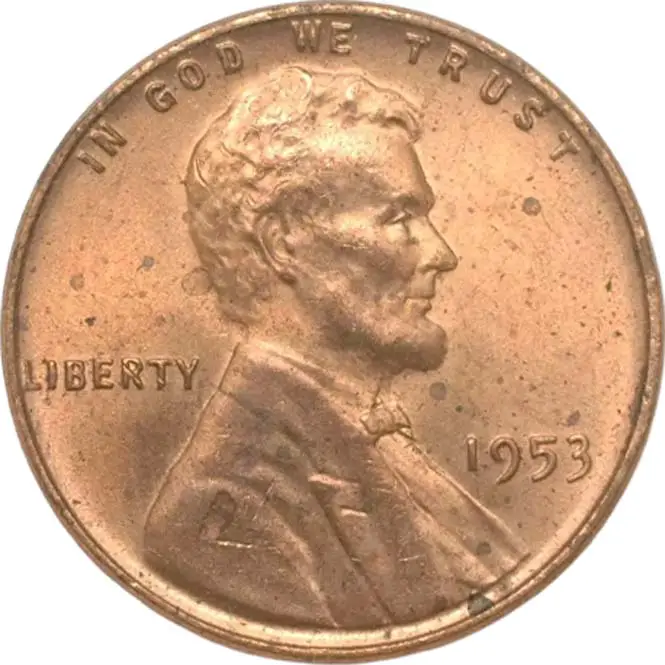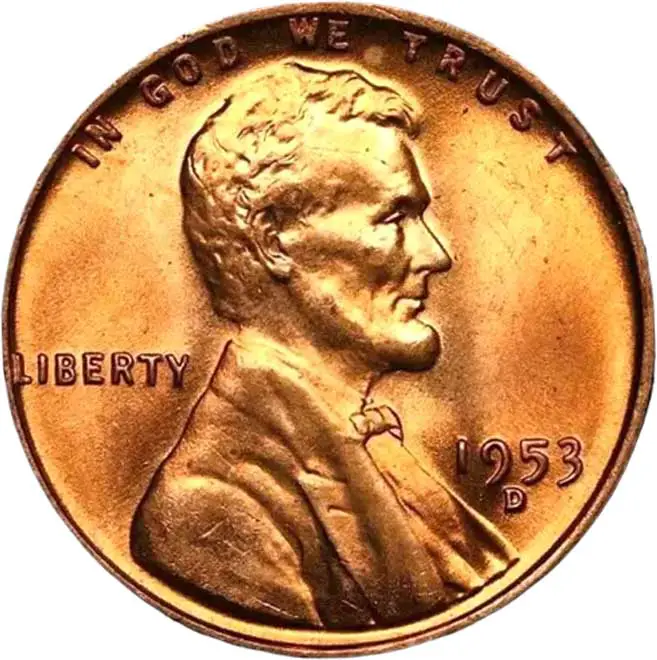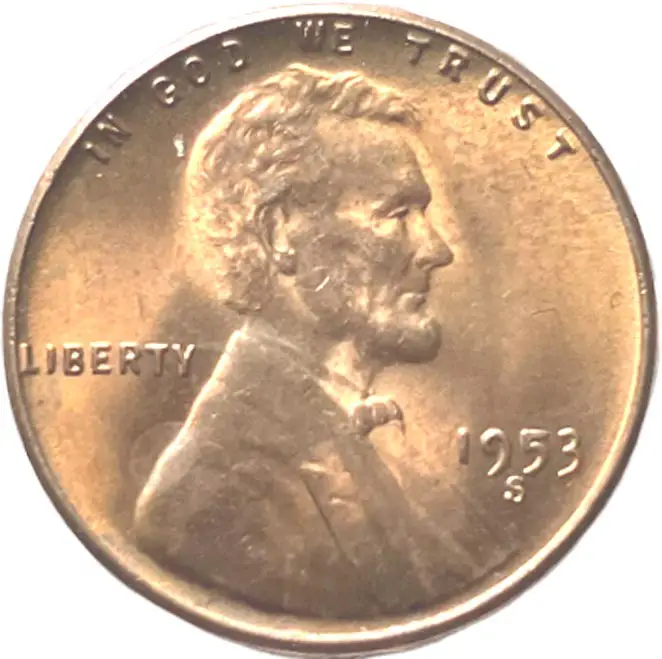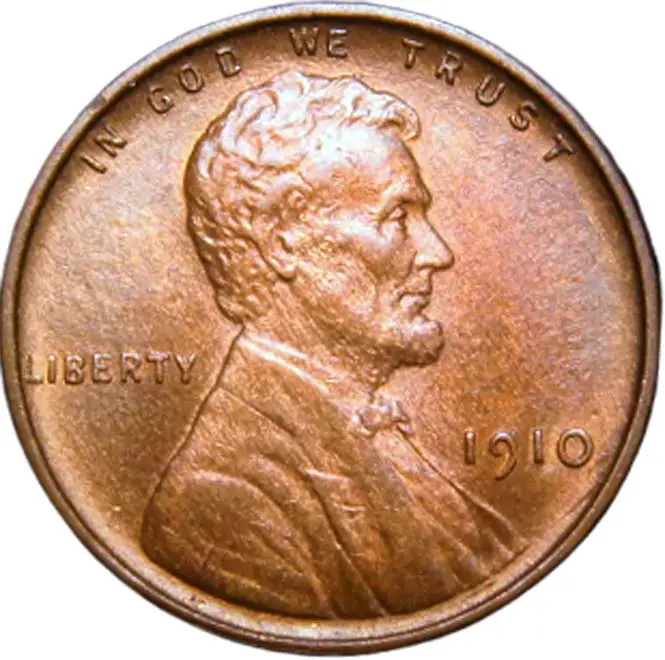- Home
- Lincoln Cents
- 1953
1953 Lincoln Wheat Penny Value | How Much Is This Cent Worth Today?

The 1953 Lincoln Wheat Penny is a staple in U.S. coin collections. Known for its classic design and historical significance, this penny is part of the beloved Wheat Cent series that spanned from 1909 to 1958.
Whether you’re a seasoned collector or a newcomer, understanding the value of the 1953 penny is essential. In this guide, we’ll explore its mintages, key details, notable errors, and tips to assess its worth.
The Lincoln Wheat Penny debuted in 1909 to honor President Abraham Lincoln’s 100th birthday. Designed by Victor D. Brenner, it features Lincoln’s profile on the obverse and wheat stalks on the reverse.
By 1953, the series had become a familiar part of American coinage, often found jingling in pockets or tucked into piggy banks.
The 1953 penny came from three mints: Philadelphia, Denver, and San Francisco. Each mint produced millions of these coins, making them common but still cherished. For collectors, the intrigue lies in variations, condition, and potential errors.
Mintages and Mint Marks
The value of any coin often begins with its mintage—how many were produced. Here’s a breakdown of 1953 Lincoln Wheat Penny production numbers by mint:
- Philadelphia Mint (No Mint Mark): 256,755,000 coins.
- Denver Mint (D): 700,515,000 coins.
- San Francisco Mint (S): 181,835,000 coins.
The Denver mint had the highest output, while San Francisco’s smaller mintage can make its coins slightly more desirable in higher grades. The Mint also struck 128,800 proof coins in Philadelphia for collectors.
Composition and Specifications
The 1953 Lincoln Wheat Penny consists of 95% copper and 5% tin & zinc. Its weight is 3.11 grams and diameter is 19 mm.
1953 D Lincoln Wheat Penny

The 1953-D Lincoln Wheat Penny, minted in Denver, is notable for its high mintage of over 700 million coins, making it one of the more common Wheat Cents.
In circulated grades, it holds a modest value, typically ranging from $0.05 to $0.15. However, uncirculated examples, especially those graded MS-65 or higher, can fetch $5 to $15 due to their better preservation and collector appeal.
Collectors should also look for potential errors, such as off-center strikes or die cracks, which can significantly increase its value.
1953 S Lincoln Wheat Penny

The 1953-S Lincoln Wheat Penny, minted in San Francisco, had a relatively lower mintage of about 182 million coins, making it slightly scarcer than its Philadelphia and Denver counterparts.
In circulated grades, its value typically ranges from $0.10 to $0.25, but uncirculated examples in MS-65 or higher can command $10 to $20, reflecting collector demand for well-preserved coins.
This penny is particularly desirable due to its sharp strike quality, characteristic of San Francisco mint coins. Error varieties, like die cracks or doubled dies, can further boost its appeal and value among collectors.
Values by Condition and Mint Mark
| Date | VF-20 | EF-40 | MS-63 |
|---|---|---|---|
| 1953 | $0.10 | $0.15 | $0.50 |
| 1953 (D) | $0.10 | $0.15 | $0.50 |
| 1953 (S) | $0.10 | $0.15 | $0.60 |
(S) minted in San Francisco. (D) minted in Denver.
Valuation Source: The Official Red Book 77th Edition 2024
The 1953 Lincoln Wheat Penny’s value varies based on its mint mark and grade:
-
Circulated Coins:
- Philadelphia and Denver pennies in Good to Fine condition are typically worth around $0.05 to $0.15.
- San Francisco coins in similar conditions might bring $0.10 to $0.25.
-
Uncirculated Coins (Mint State):
- MS-60 grades can fetch $2 to $5 for Philadelphia and Denver mint pennies.
- San Francisco mint coins in MS-65 or higher may range from $10 to $20 due to their lower mintage and desirability among collectors.
Key Dates and Rarities
While 1953 is not considered a key date for Lincoln Wheat Pennies, some issues are more valuable:
- 1953-S in high grades (MS-66 and above)
- 1953 Proof coins, especially in top grades
Errors and Varieties
Error coins add intrigue and value to any series. Some notable errors for the 1953 Lincoln Wheat Penny include:
- Doubled Die Obverse (DDO): These coins show doubling on the date, lettering, or Lincoln’s profile. Depending on the grade, they can be worth $50 or more.
- Repunched Mint Marks (RPM): Visible on some Denver and San Francisco issues
- Off-Center Strikes: Coins struck off-center by 5% to 50% are collectible, with values ranging from $10 to $100 based on the severity.
- BIE Error: This minor die break creates a “BIE” appearance between the B and E in “LIBERTY.” These can sell for $5 to $20.
- Clipped planchets: Coins with a portion of the edge missing
Collectors often search for these errors because they stand out from the standard 1953 pennies and offer higher resale value.
Conclusion
The 1953 Lincoln Wheat Penny is a remarkable piece of history and a cornerstone of many collections. Its affordability, combined with the possibility of rare errors or high grades, makes it an exciting coin for both beginners and seasoned collectors.
Whether you’re hunting for a specific variety or simply appreciating its design, this penny offers endless opportunities to explore and enjoy the hobby of coin collecting.
By understanding the value, history, and details of the 1953 Lincoln Wheat Penny, you’ll be better prepared to evaluate its place in your collection—or perhaps inspire a new generation to cherish these timeless coins.
Lincoln Wheat cents were produced during the following years:
1909, 1910, 1911, 1912,1913, 1914, 1915, 1916, 1917, 1918, 1919, 1920, 1921, 1922, 1923, 1924, 1925, 1926, 1927, 1928, 1929, 1930, 1931, 1932, 1933, 1934, 1935, 1936, 1937, 1938, 1939, 1940, 1941, 1942, 1943, 1944, 1945, 1946, 1947, 1948, 1949, 1950, 1951, 1952, 1953, 1954, 1955, 1956, 1957, 1958.




